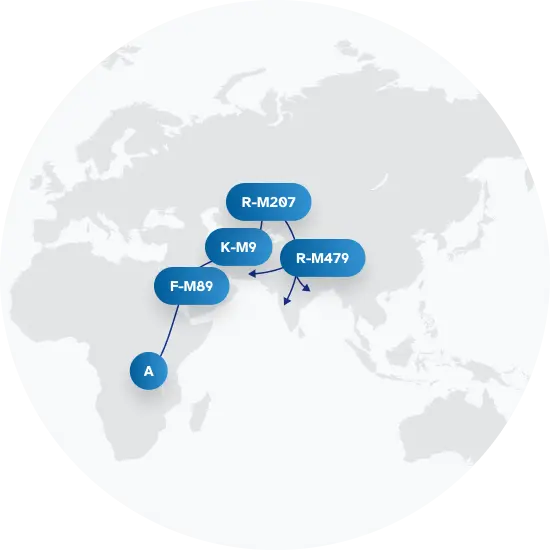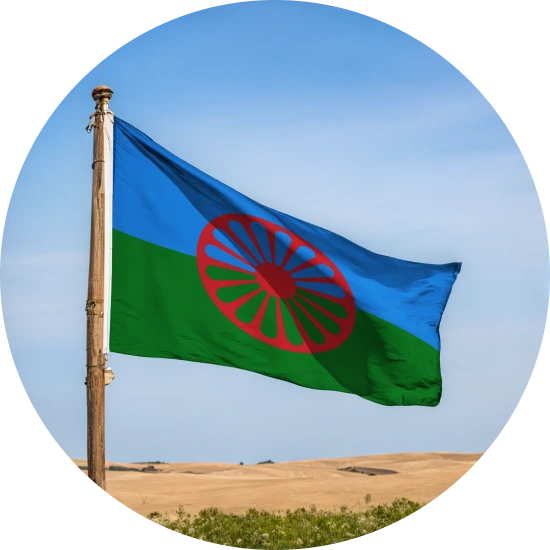Explore the Family Name Parikh
How common is the last name Parikh in the United States?
Based on the Decennial U.S. Census, the popularity of the surname Parikh has significantly increased from 2000 to 2010. In 2000, it was ranked 6170 and by 2010, it had risen to 4724, a jump of almost 23.44%. The count followed suit, ballooning from 5113 to 7506, marking an impressive 46.8% growth within this ten-year period. This also translated into a rise in the proportion per 100k from 1.9 to 2.54, demonstrating a 33.68% increase.
| 2000 | 2010 | Change | |
|---|---|---|---|
| Rank | #6,170 | #4,724 | 23.44% |
| Count | 5,113 | 7,506 | 46.8% |
| Proportion per 100k | 1.9 | 2.54 | 33.68% |
Race and Ethnicity of people with the last name Parikh
Ethnically, the majority of individuals with the surname Parikh identify as Asian/Pacific Islander based on data from the Decennial U.S. Census. This ethnic identity experienced a slight boost from 92.33% in 2000 to 94.66% in 2010, which represents a 2.52% change. Those identifying as two or more races saw a significant drop from 4.28% to 2.21%, a decline of around 48.36%. The percentage of those identifying as White, Hispanic, Black, and American Indian and Alaskan Native all decreased during this time frame, albeit at smaller rates. Notably, the proportion identifying as White fell by about 4.56%, while Hispanic dropped by approximately 12.20%. There was a decrease of about 5% in those identifying as Black and a 24.32% decline in those identifying as American Indian or Alaskan Native.
| 2000 | 2010 | Change | |
|---|---|---|---|
| Asian/Pacific Islander | 92.33% | 94.66% | 2.52% |
| White | 2.41% | 2.3% | -4.56% |
| Two or More Races | 4.28% | 2.21% | -48.36% |
| Hispanic | 0.41% | 0.36% | -12.2% |
| American Indian and Alaskan Native | 0.37% | 0.28% | -24.32% |
| Black | 0.2% | 0.19% | -5% |
Parikh ancestry composition
23andMe computes an ancestry breakdown for each customer. People may have ancestry from just one population or they may have ancestry from several populations. The most commonly-observed ancestry found in people with the surname Parikh is Northern Indian & Pakistani, which comprises 76.7% of all ancestry found in people with the surname. The next two most common ancestries are Southern Indian & Sri Lankan (6.3%) and Gujarati Patidar (5.8%). Additional ancestries include British & Irish, French & German, Southern Indian Subgroup, Eastern European, and Bengali & Northeast Indian.
Ready to learn more about your ancestry? Get the most comprehensive ancestry breakdown on the market by taking our DNA test. Shop 23andMe
| ANCESTRY BREAKDOWN | COMPOSITION |
|---|---|
| Northern Indian & Pakistani | 76.7% |
| Southern Indian & Sri Lankan | 6.3% |
| Gujarati Patidar | 5.8% |
| Other | 11.1% |

Possible origins of the surname Parikh
Your DNA provides clues about where your recent ancestors may have lived. Having many distant relatives in the same location suggests that you may all share common ancestry there. Locations with many distant relatives can also be places where people have migrated recently, such as large cities. If a large number of individuals who share your surname have distant relatives in a specific area, it could indicate a connection between your surname and that location, stemming from either recent ancestral ties or migration.
Based on 23andMe data, people with last name Parikh have recent ancestry locations in India and the United Kingdom of Great Britain and Northern Ireland.
| RECENT ANCESTRY Location | Percentage |
|---|---|
| Gujarat, India | 62.20% |
| Maharashtra, India | 56.80% |
| Rajasthan, India | 24.30% |
| Uttar Pradesh, India | 23.00% |
| Madhya Pradesh, India | 23.00% |
What Parikh haplogroups can tell you
Haplogroups are genetic population groups that share a common ancestor on either your paternal or maternal line. These paternal and maternal haplogroups shed light on your genetic ancestry and help tell the story of your family.
The top paternal haplogroup of people with the surname Parikh is R-L266, which is predominantly found among people with Central & South Asian ancestry. Haplogroup R-L266 is descended from haplogroup R-M479. Other common haplogroups include H-M52 and J-M172, which are predominantly found among people with Central & South Asian and European ancestry. Other surnames with similar common haplogroups are: Gandhi, Chandra, Zaman, Prasad, Verma, Shaikh, Das, Haque, Srivastava, Baig.
The most common maternal haplogroups of people with Parikh surname are: M, R, M30. These most commonly trace back to individuals of Central & South Asian and European ancestry.
 Paternal Haplogroup Origins R-M479
Paternal Haplogroup Origins R-M479
Your paternal lineage may be linked to the Romani people
The Roma, who are also called "Gypsies" and "Romanies," are an ethnic group that originated in India and migrated to Europe 1,000 years ago. There are several different Roma populations, including Vlach Roma, who speak Hungarian and Romani languages, and Carpathian Roma, who speak exclusively Hungarian. Today, Roma populations mostly live in Southeastern and Central Europe, and make up about 7% of the total population in Hungary. Haplogroup R2a is also present in a Kuwaiti Bedouin population called the Awazim. It is possible that haplogroup R2a was brought into the Awazim population during the migration of the Roma people from India to Europe 1,000 years ago.
Your maternal lineage may be linked to many people of Europe and Asia
Most of Europe's most common haplogroups, including H, J, T, V and U, are offshoots of R. Some, like U, were involved in some of the earliest migrations to Europe, while others spread from the Middle East with the dawn of agriculture. These groups spread east as well, reaching Central Asia and India first with early farmers and then with Iron Age migrants. In East Asia, R gave rise to the dominant haplogroups F and B. Members of just one branch of B, B2, migrated from Siberia to the Americas after the peak of the Ice Age 18,000 years ago, where their descendants are found today. However, no other branches of R have been found in the indigenous people of North and South America.

What do people with the surname Parikh have in common?
Spoiler alert: it's complicated. People with the same last name are usually no more genetically similar than a randomly sampled group of people from the same population. That said, people with the same surname are more likely to have similar ancestries than randomly sampled individuals. The reason is the tendency of people with similar cultural or geographical backgrounds to preferentially mate with one another. That's why people who share a surname may be more likely to share traits and tendencies in common than people within the general population. Check out the percentages below to see the prevalences of tastes, habits, and traits of people with your surname compared with prevalences among 23andMe users.
Preferences
Are health conditions linked to the last name Parikh?
The short answer is that, if there is an association between surname and health, it's usually more about your ancestry than your name. Individuals with a given surname are no more genetically similar than the general population but often have similar ancestries. The populations of people associated with those shared ancestries often have sets of genetic variations, also known as alleles, in common. Some of those alleles are associated with a greater likelihood of developing certain diseases.
Disease variant frequency by ancestry
Disease allele frequencies in populations associated with the surname Parikh are shown below. Important Note: not everyone with a disease allele will develop these health condition



